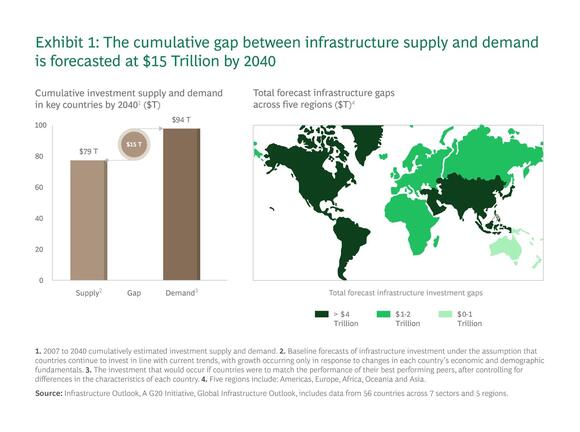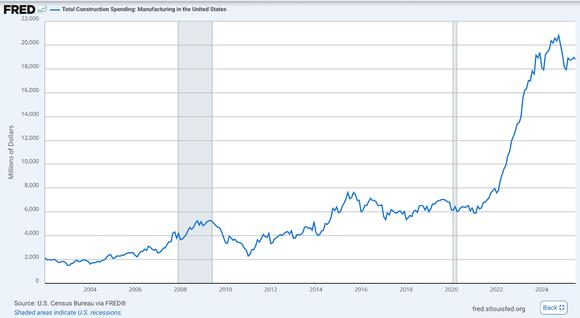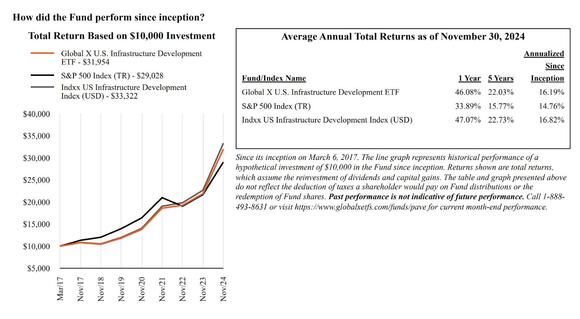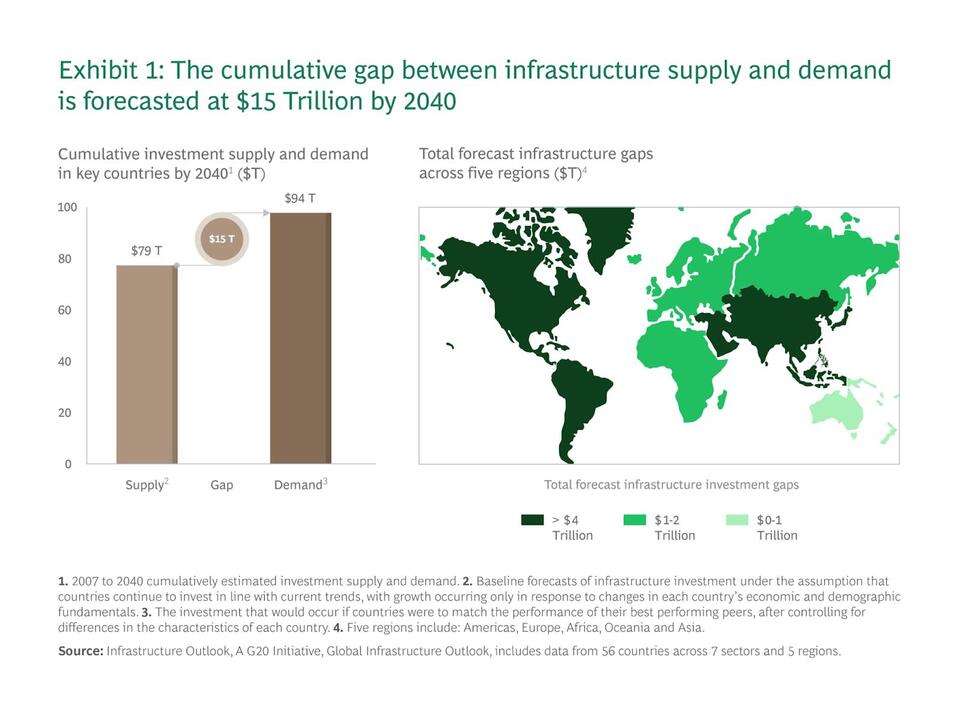- Construction and engineering companies drive global infrastructure and benefit from urbanization, climate resilience and government spending.
- Key players include Jacobs, AECOM and Fluor (miscellaneous engineering), Quanta Services (renewable grids), Caterpillar/Deere (equipment) and Vulcan/Martin Marietta (materials).
- Trillion-dollar government programs, private sector demand and the adoption of digital/AI-driven construction technologies are driving growth.
- Risks include cyclicality, cost overruns, commodity inflation, labor shortages and valuation pressures – so selective positioning is crucial.
Building blocks of the global economy
TradingKey – Construction, construction and engineering companies rarely get the same headlines as tech companies, but they form the backbone of most economies today. From bridges and highways to airports, power plants and skyscrapers, their work forms the foundation of commerce and quality of life. Investor ownership of these stocks provides exposure to infrastructure cycles, government spending and long-term urbanization trends.
Unlike speculative growth industries, engineering and construction always deliver tangible value based on physical assets. They may be cyclical and tied to economic activity, but the very need for infrastructure ensures constant demand. In a world threatened by asset obsolescence, climate change and population growth, these companies are at the heart of the transformation needed.
Why the sector is important
Infrastructure is more than concrete and steel; It is the circulatory system of the economy. It reduces the cost of transporting goods, provides electricity to factories and resists natural shocks. As governments face increasing infrastructure deficits, contractors and engineers are becoming key partners in bridging the gap.
Urbanization exacerbates this need. By 2050, two-thirds of the population is expected to live in cities, requiring significant investment in housing, transport and services. Climate change, however, brings with it other priorities: flood protection, solar and wind turbines, and resilient infrastructure that can withstand extreme heat waves and storms.
This dynamic ensures reliable long-term demand and makes the company a core position in long-term portfolios.

Source: https://www.bcg.com
Commodity currencies
It is a large and complex business. There are global engineering conglomerates such as Fluor (FLR) and Jacobs Solutions (J) that provide design, project and technical services for tasks ranging from energy and transit to defense. There is AECOM (ACM), which combines engineering and consulting and specializes in sustainable infrastructure and urban planning.
Specialized players also form niches. Quanta Services (PWR) has become an energy infrastructure leader, developing renewable energy and transmission infrastructure. Heavy equipment manufacturers such as Caterpillar (CAT) and Deere (DE) do not get involved in projects themselves, but rather support the entire industry with complementary machines for large-scale construction.
Aggregates and cement suppliers Vulcan Materials (VMC) and Martin Marietta (MLM) immediately benefit from infrastructure spikes because their businesses correspond directly to demand for raw materials in road, bridge and real estate construction.
Growth drivers
The most visible growth catalyst is government spending. It is the United States' Infrastructure Investment and Jobs Act, worth over $1 trillion, which will accelerate contracts for Fluor, AECOM and Quanta Services in the coming years. Complementary to European and Asian initiatives, these will modernize transport infrastructure, renewable energy and resilient utilities.
Private sector demand provides an additional layer. Industrial and real estate development companies now often hire large firms like Jacobs to bring advanced technologies to the design of sustainable structures. Quanta Services is benefiting from the changing energy sector as the utility industry builds renewable energy sources and replaces aging grids.
Finally, execution is being redesigned through the use of technology. Jacobs introduced data-driven project management and Building Information Modeling (BIM) and Caterpillar added AI to its machines to increase productivity. Companies that combine old-fashioned construction methods with new technologies will drive the next level of growth.

Source: https://www.fred.stlouisfed.org
Risks and challenges
Despite the structural tailwind, the industry faces challenges. The cyclicality should not be underestimated; During recessions, private construction activity declines, to the detriment of builders and contractors. Cost overruns and delays in megaprojects can be detrimental to companies like Fluor, which typically participate under fixed-price agreements.
Commodity inflation, such as steel, aggregates and fuels, can reduce margins if not passed on to customers and impacts Vulcan Materials, among others. Labor shortages make project execution and profitability even more difficult.
Another aspect is the evaluation. Although Quanta Services continues to command a premium multiple due to its involvement in the energy transition, others, such as Fluor, remain more cyclical and volatile names. It is up to investors to weigh the health of the balance sheet and project pipelines when determining exposure.
Portfolio positioning
Construction and engineering company stocks can fit portfolios in a variety of ways. Core holdings in solid, diversified companies such as Jacobs or AECOM offer defensive exposure. Specialty contractors like Quanta Services benefit from the structural growth associated with solar and other renewable energy sources. Economic growth is driven by Caterpillar and Deere, both of which benefit from industrial and agricultural development.
Companies like Vulcan and Martin Marietta are increasing exposure to infrastructure volume growth. Investors seeking diversified exposure can also use ETFs tied to U.S. infrastructure or industrial stocks, which include contractors, suppliers and equipment manufacturers.

Source: https://www.assets.globalxetfs.com
Income investors will be interested in large-cap companies that generate consistent dividends, and growth-oriented portfolios will be selective in renewable infrastructure enablers like Quanta. The diversity of the sector allows investors to balance stability and risk.
Conclusion: Own the future of infrastructure
Not sexy like Silicon Valley, but building and building provides permanence and immediacy. As nations grapple with aging infrastructure, climate change and urbanization, the outlook for companies like Jacobs, Fluor and Quanta Services is expected to improve. As buyers like Vulcan and entrepreneurs like Caterpillar fill the market with products that meet changing needs, the stage is set for their success.
Risk, cyclicality, cost pressures and execution are legitimate, but megatrends driving infrastructure spending overshadow them. Construction and engineering stocks offer investors a direct link to global growth while also being a bet on infrastructure growth; They not only build buildings, but also lay the foundations for the economy and for resilient portfolios that are built for the future.

Get started
Learn more
